However, Travis Childers is only the third person to represent this area of Mississippi since Wall Doxey resigned after winning the special election to succeed the great Pat Harrison (the execrable James O. Eastland had been appointed to fill the seat in the interim and later beat Wall Doxey in the primary).
Jamie Whitten, the longest-serving Representative in history, held this seat from November 4, 1941-January 3, 1995. He was Chairman of the powerful Appropriations Committee from 1979-1993 [not a record; George H. Mahon of Texas, the previous Appropriations Chairman holds that record in terms of consecutive years, while Clarence Cannon holds the record for most years period; David Obey has been ranking member for 14 years since Bill Natcher(KY-2) died [Ron Lewis' victory in the special election to replace him was a harbinger of the Gingrich revolution], but spent most of those years in the minority; it looks like he'll continue to be Chairman for as long as he wants to be (he's still a relatively young 69 for someone who's been ranking member of Appropriations for 14 years; 10 more years is certainly not out of the question).
At any rate, I did some map-drawing at college in the library using Congressional Quarterly sources. I figure this is a good place to post the Mississippi district maps.
When Jamie Whitten was first elected, he was elected to the 2nd district (in purple) of Mississippi. The current 1st district contained parts of that district and parts of the then 1st district, represented by the viciously anti-Semitic John Rankin, and a bit of the 4th district, represented by Thomas Abernethy (Mississippi is one of a very few states never to have elected a Jewish Congressperson, incidentally).

After the loss of a seat (down from 7 to 6) in 1950, they consolidated, and Rankin lost in a primary with Abernethy.

The 1960 apportionment reduced Mississippi's delegation from 6 seats to 5 seats. Other than Whitten's 2nd district absorbing Frank E. Smith's entire 3rd district (Jamie Whitten beat him in the primary) and the 2nd shedding Calhourn County, the map remained unchanged.
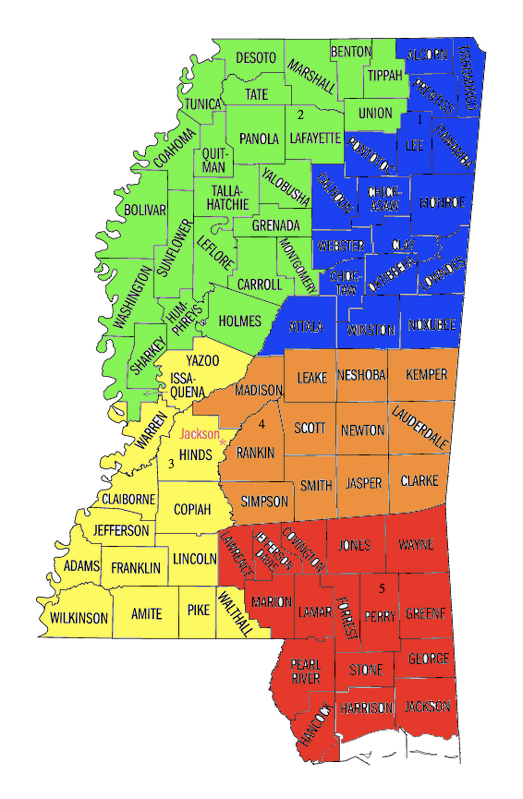
However, drastic changes followed thanks to the landmark "one man, one vote" cases in the 1960's such as Wesberry v. Sanders and Baker v. Carr. In Mississippi's case, the redistricting was also heavily influenced by the passage of the Voting Rights Act of 1965, which greatly hampered the ability of whites to scare blacks away from voting.
To compensate, they split the heavily black western part of the state into 4 different districts, preventing a single district from being majority black and thus electing an African-American to Congress.

This same pattern continued in the 1970's
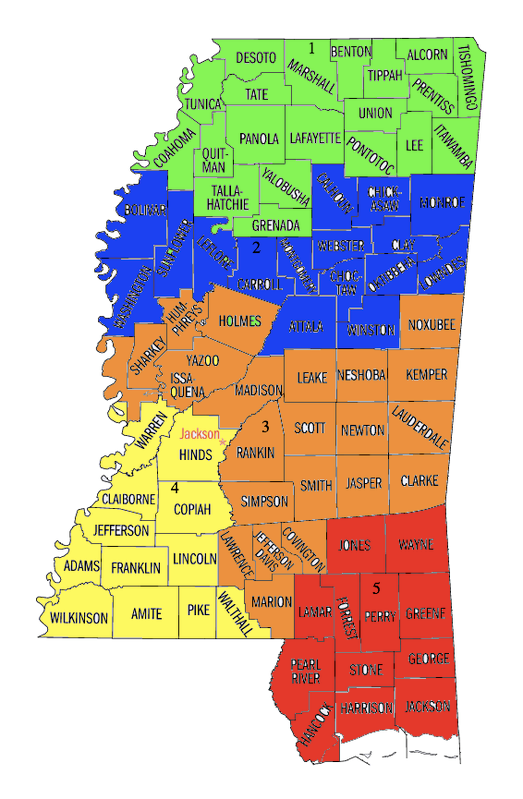
and to some extent in the 1980 redistricting
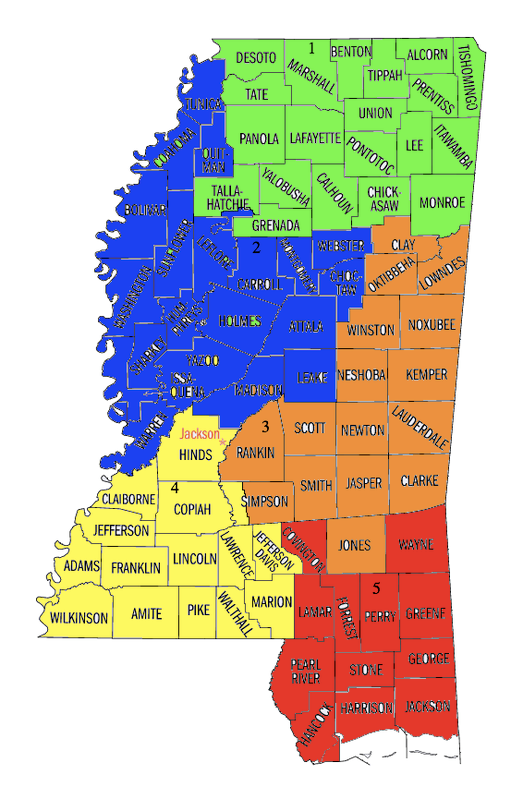
However, the Justice Department ruled that a black majority district had to be created, and this was done in 1984 with the 2nd district.
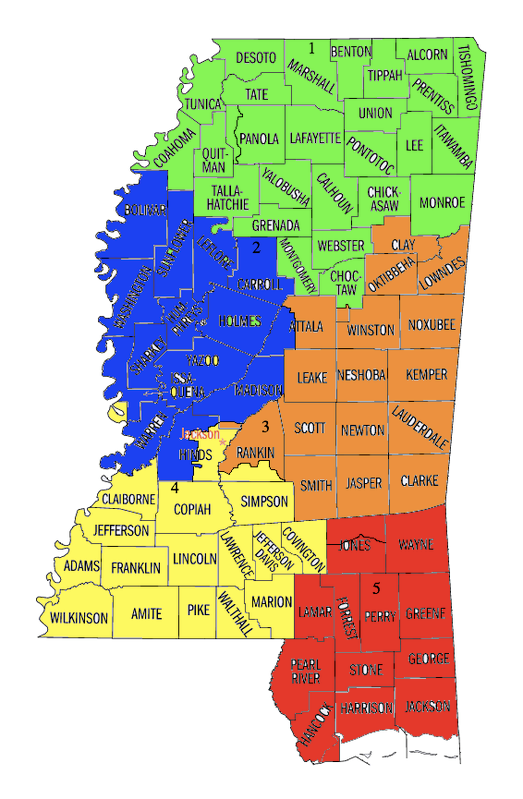
Similarly, in the 1990's, a majority black district was retained.
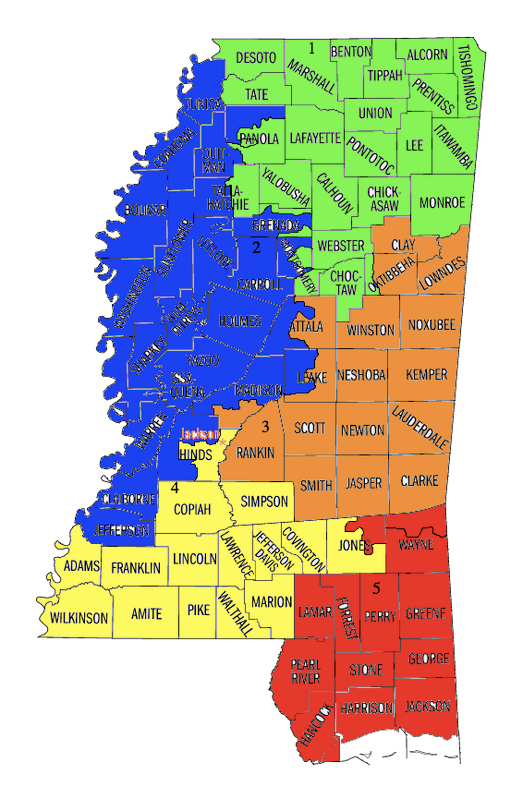
Finally, Mississippi again lost a seat in the 2000 redistricting (down to 4 seats)
Despite the Democratic legislature, the merging of Democratic Representative Ronnie Shows' district with that of Republican Representative Chip Pickering favored Pickering, and Pickering won the election in 2002.
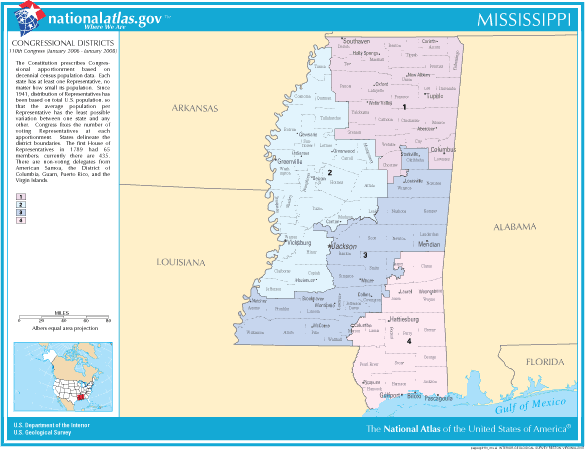
Tonight, Travis Childers won back Mississippi's 1st, and Pickering is the only Republican left in Mississippi's House delegation.
Once the precinct results have been posted, I'm going to look and see if Greg Davis' strategy did in fact "blackfire" (i.e. instead of pushing white voters away from Childers and towards him, it in fact galvanized high black turnout)

